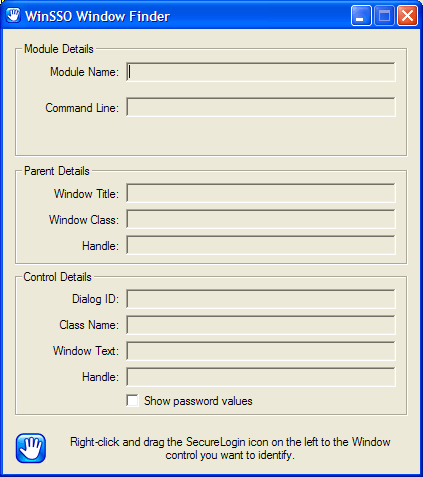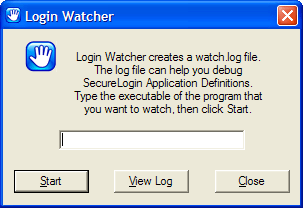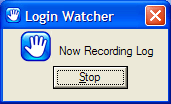3.3 Windows Application Definition Tools
SecureLogin provides wizards to assist with the creation of basic application definitions (refer to the SecureLogin administration guide for wizards instructions). For more complex applications and requirements, SecureLogin provides the following tools to assist with finding the application information required to build an application definition:
3.3.1 Finding Application Details With Window Finder
Window Finder finds windows applications details including control and dialog IDs. SecureLogin may require this information to identify specific objects in order to uniquely identify the application.
Control IDs are used to uniquely identify objects within a window. Window Finder extracts this information from the application for use in the application definition.
Start SecureLogin’s Window Finder
The following procedure uses the Novell SecureLogin test application provided on the SecureLogin distribution CD.
-
On the Windows start menu, select . The WinSSO Window Finder is displayed.

-
Right-click the securelogin icon
 in the dialog box,
drag to the required window, field or control, and release the mouse
button.
in the dialog box,
drag to the required window, field or control, and release the mouse
button.
WINSSO Window Finder Details
The following table lists the fields in the WinSSO Window Finder:
Table 3-2 Window finder details
3.3.2 Finding Application Details with the Login Watcher
Login Watcher records log on and Windows application data to provide information that you may need for creating an application definition.
Order Information is Recorded and Stored
Information is recorded and stored in a text file in the following order:
Time||Module Name||Window Handle||Window Text||Class Name||Parent||Visible Flag||Title Flag||Control ID
NOTE:Login watcher records all log on information, including usernames and passwords, in a text file. This text file may be a security issue.
Information Details
SecureLogin Test Application Example
The following procedure uses the SecureLogin test application:
Starting Login Watcher
-
Right-click the SecureLogin task bar icon.
-
Select from the menu.
-
Double-click loginwatch.exe, by default located at <...>\program files\novell\securelogin\tools. the logon watcher dialog box is displayed.

-
Specify the executable filename in the Login Watcher field.
-
Click . The Now Recording Log confirmation dialog box appears.

-
Log on to the relevant application.
-
Click S when logged on successfully to return to the login watcher dialog box.
-
click . SecureLogin starts the Notepad application and displays the watch.txt file with log on details recorded.
-
Note the required information or save the text file with a different name.
-
Click the Login Watcher dialog box. Click .